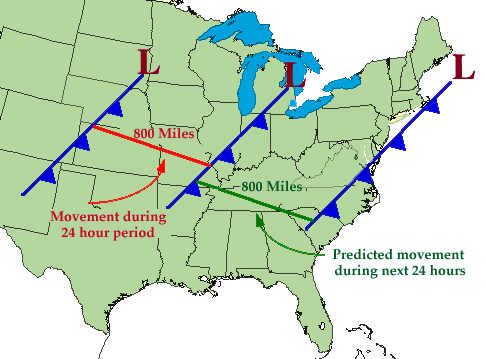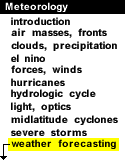
|
The trends method involves determining the speed and direction of movement for fronts, high and low pressure centers, and areas of clouds and precipitation. Using this information, the forecaster can predict where he or she expects those features to be at some future time. For example, if a storm system is 1000 miles west of your location and moving to the east at 250 miles per day, using the trends method you would predict it to arrive in your area in 4 days.
Mathematics
(1000 miles / 250 miles per day = 4 days)
Using the trends method to forecast only a few hours into the future is known as "Nowcasting" and this method is frequently used to forecast precipitation. For example, if a line of thunderstorms is located 60 miles to your northwest and moving southeast at 30 miles per hour, you would predict the storms to arrive in your area in 2 hours. Below is an example of using the trends method to forecast the movement of a cold front. Initially, the cold front moved 800 miles during the first 24 hours, from the central Plains to the Great Lakes.

Using the trends method, you would predict this weather system to move another 800 miles in the next 24 hours, reaching the East Coast of the United States. The trends method works well when systems continue to move at the same speed in the same direction for a long period of time. If they slow down, speed up, change intensity, or change direction, the trends forecast will probably not work as well.

persistence |
|

other methods |




